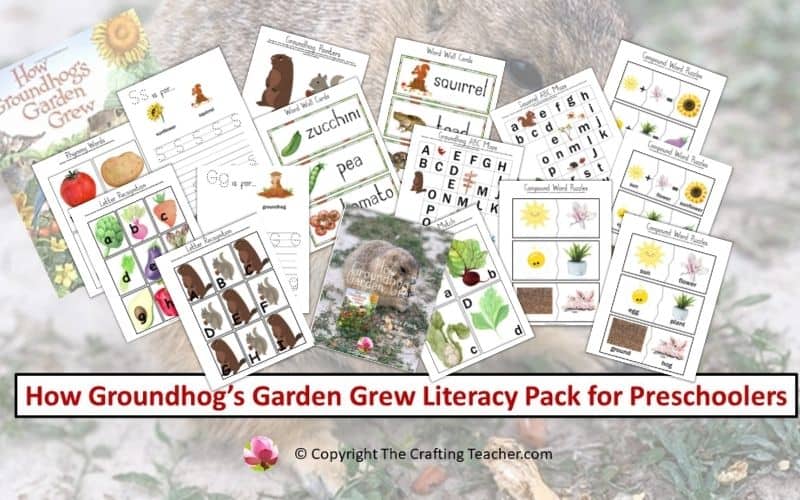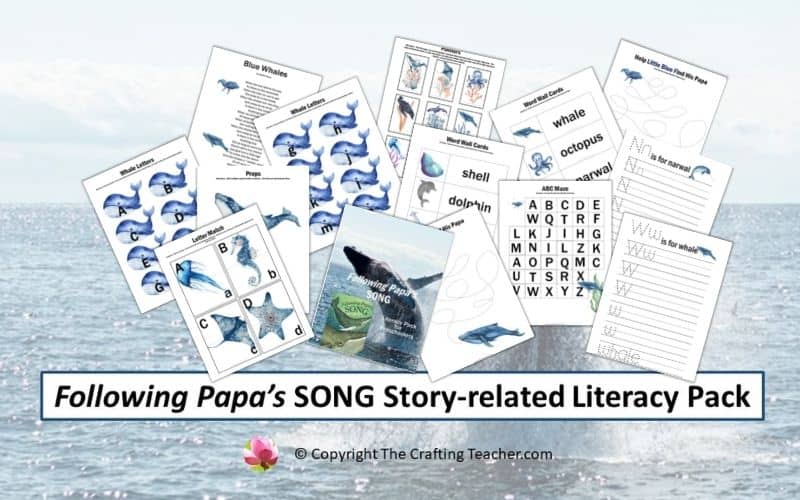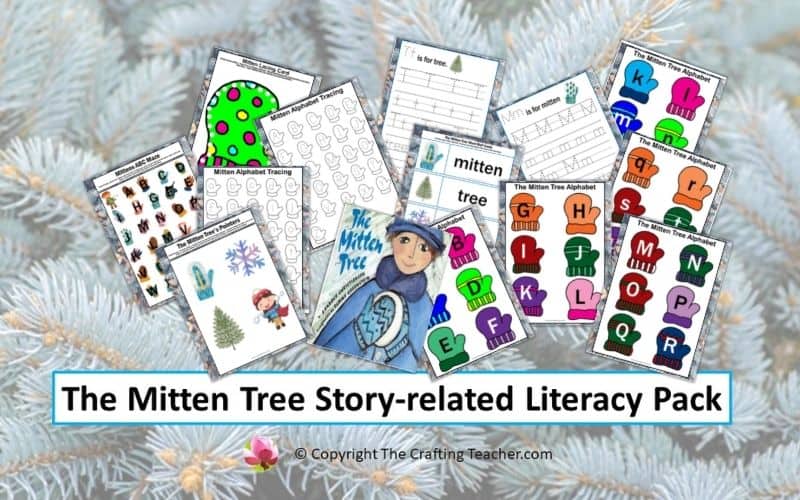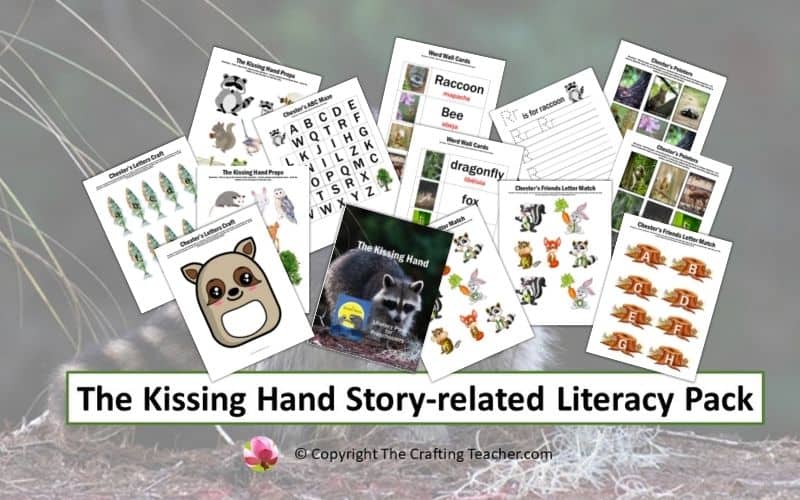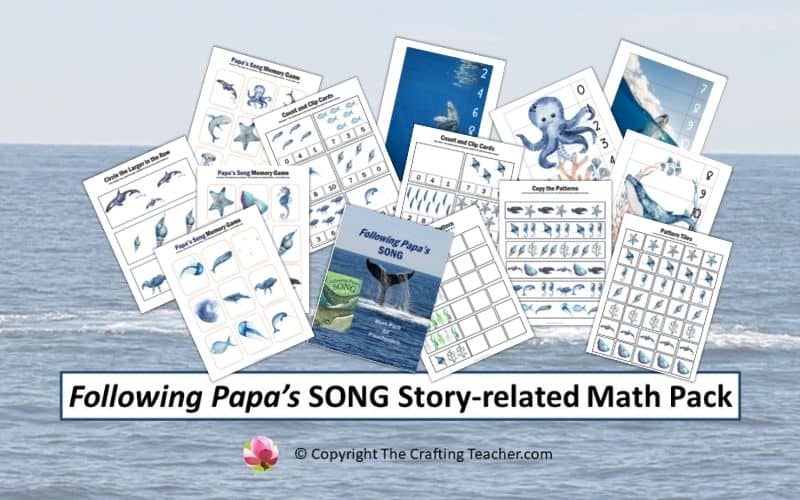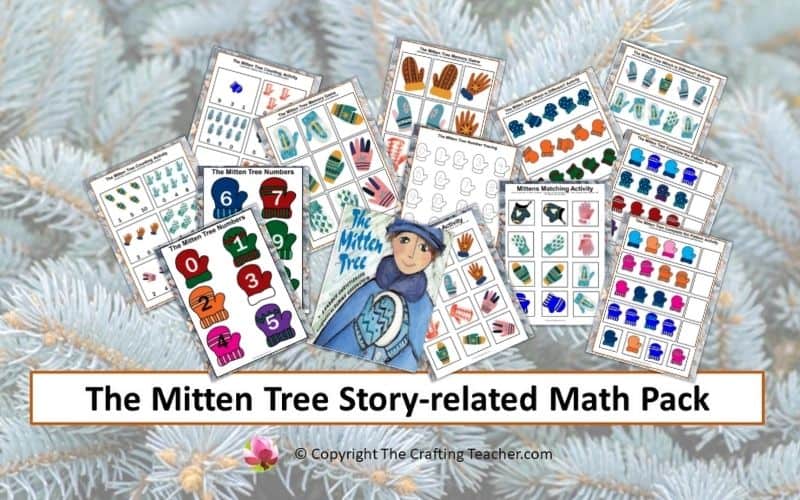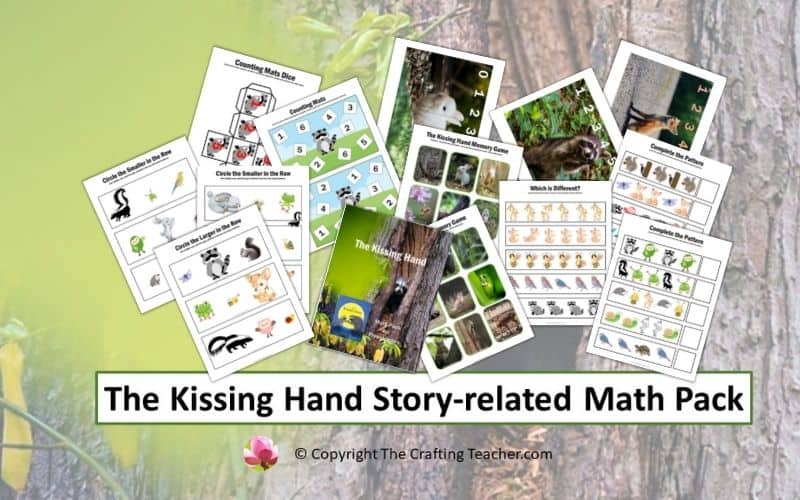How Groundhog’s Garden Grew Story-related Literacy Pack for Preschoolers
Affiliate Disclosure: “This post contains affiliate links, which means I receive a small commission, at no extra cost to you, if you make a purchase using those links.”
How the Groundhog’s Garden Grew by Lynne Cherri is a book that talks about a little groundhog getting in trouble for stealing from his friend’s garden and is taught by Squirrel to grow his very own. From seed-gathering to planting, harvesting, and eating home-grown fruits and vegetables, children join Little Groundhog in learning about the gardening process. In the end, Little Groundhog invites his animal friends to a harvest feast. Beautiful illustrations and thorough research on plants and insects make this sweet story an engrossing read, as well as a great picture book introduction to how plants grow.
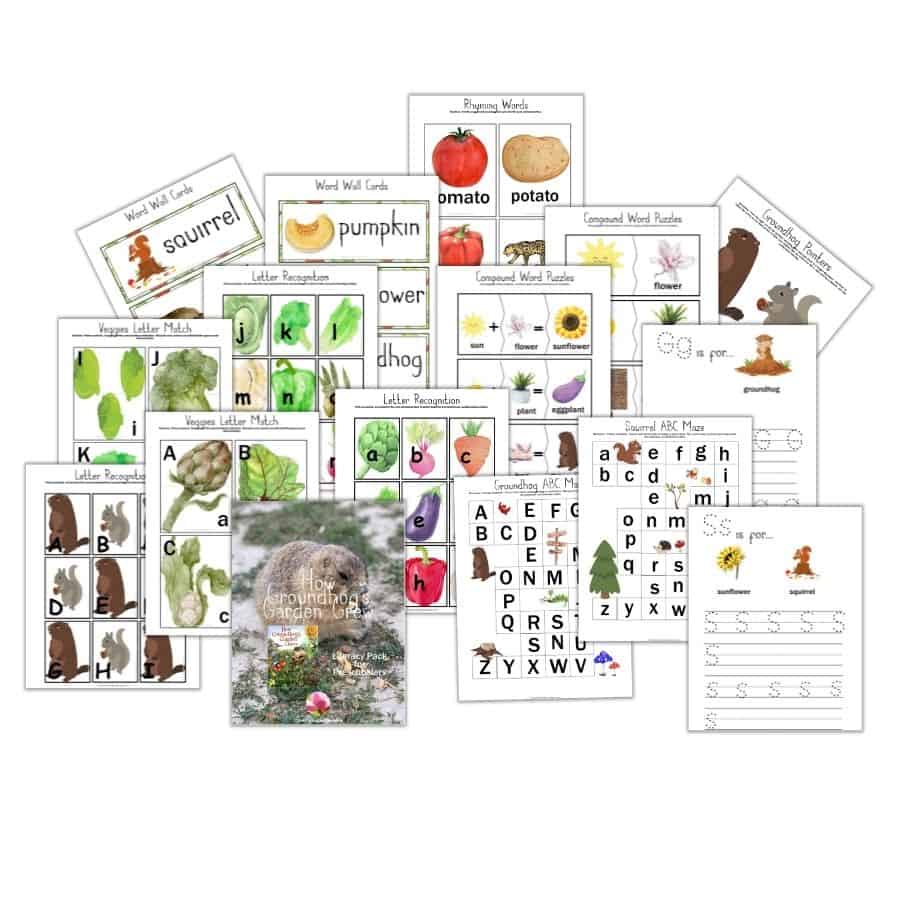
How the Groundhog’s Garden Grew is one of my favorite stories, and I’ve created a FREE 40-page Literacy Pack with eleven different activities to go along with this book. You can download it at the end of this post.
Importance of Literacy
The development of literacy skills includes awareness of books and prints, knowing the relationships between letters and sounds that makeup words, vocabulary development, and understanding stories. It is a process that starts from the very beginning of a child’s life, and it is the base for his or her future language development and the ability to read, write, and overall learning. If a child cannot read, it will be impossible for him or her to learn important concepts such as Math and Science, and understand the world around him or her.
How Groundhog’s Garden Grew Literacy Pack
There are important literacy skills that you can help your preschoolers develop using this book. Below are some ideas of activities you can do, to take advantage of this wonderful book.
Start by showing them the pictures in the book without reading. Use the opportunity to ask questions and let them comment about what they see. Then read the story.
When I read a book, I like to use pointers to mark the words as I’m reading. That is an easy and very efficient way to show preschoolers that you read from left to right and top to bottom and that words have meaning.
I’ve included two pointers in the How the Groundhog’s Garden Grew Literacy Pack for you to use with this book. You just have to print them in white cardstock, laminate them, and glue them to a tongue depressor, for easier use.
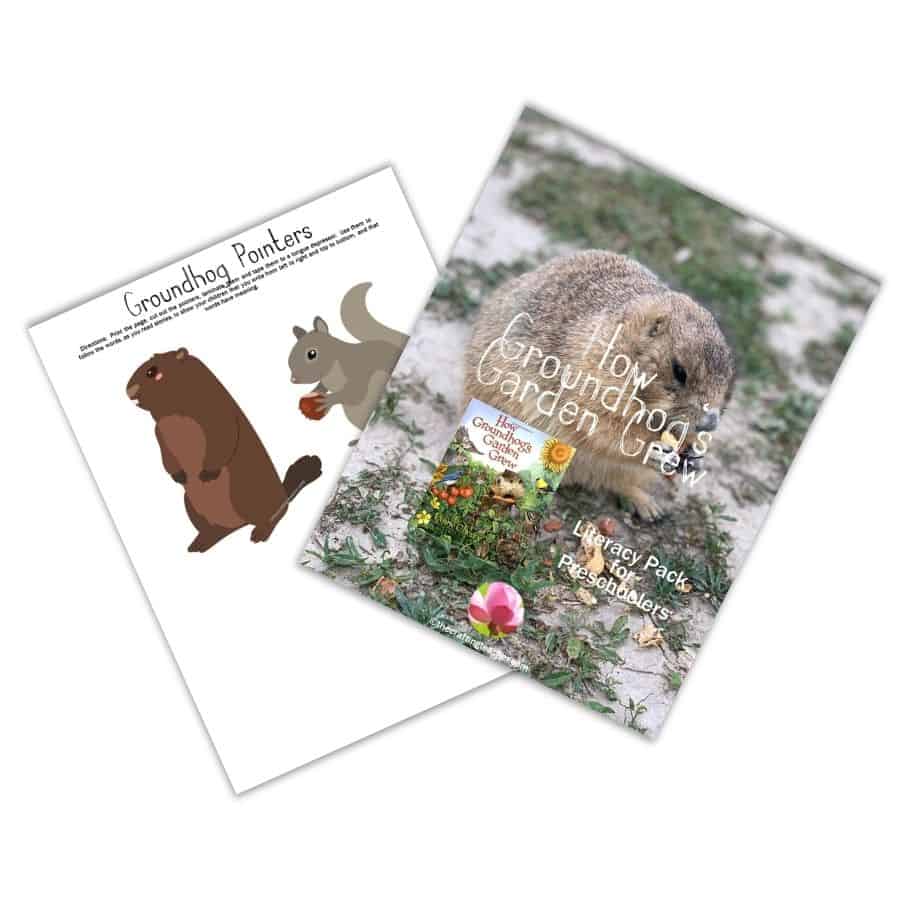
Reading Aloud and Emergent Comprehension
Questions About The Story
Before reading review the parts of the book: cover, title, author, illustrator, spine, and back.
Show them the cover and ask them what type of animals they think are those. Tell them the names of the animals. If you have talked about the different types of animals, you can review which are mammals, reptiles, birds, and insects.
During reading ask who, what, where, when, and why questions, such as:
- Who are the main characters of the story?
- Where is the story taking place?
- When do you think is better to plant?
- Which animals do you see sleeping during Winter?
Also, ask open-ended questions such as questions about the student’s life experiences. Open-ended questions are the ones that can have multiple answers.
After reading questions about the story, such as:
- Why do you think those animals hibernate?
- Do you think this story is real or make-believe? Why? Why not?
- Do you think animals can plant a garden?
- Which things are vegetables and which are fruits?
Retelling the Story
Gather the children in a circle on the floor. Place a brown sheet of paper in the middle of the circle, and tell them that it represents the soil.
Provide plastic animals, vegetables, and fruits as props. Distribute the story props among the students and encourage them to retell the story using their props. They should place the props in the “soil” to act out the story. When the activity is complete, place the props and the “soil” in the Listening or Library Center, to invite the children to retell the story on their own.
Oral Language and Vocabulary Development
If you use a Word Wall, add the words provided in the printable, to teach them to your students. I included the words pumpkin, sunflower, groundhog, bean, lettuce, brussels sprouts, potato, pepper, radish, squirrel, toad, tortoise, zucchini, pea, and tomato, which are the names of some of the animals, vegetables, and fruits that appear in the story, in the How the Groundhog’s Garden Grew Literacy Pack.
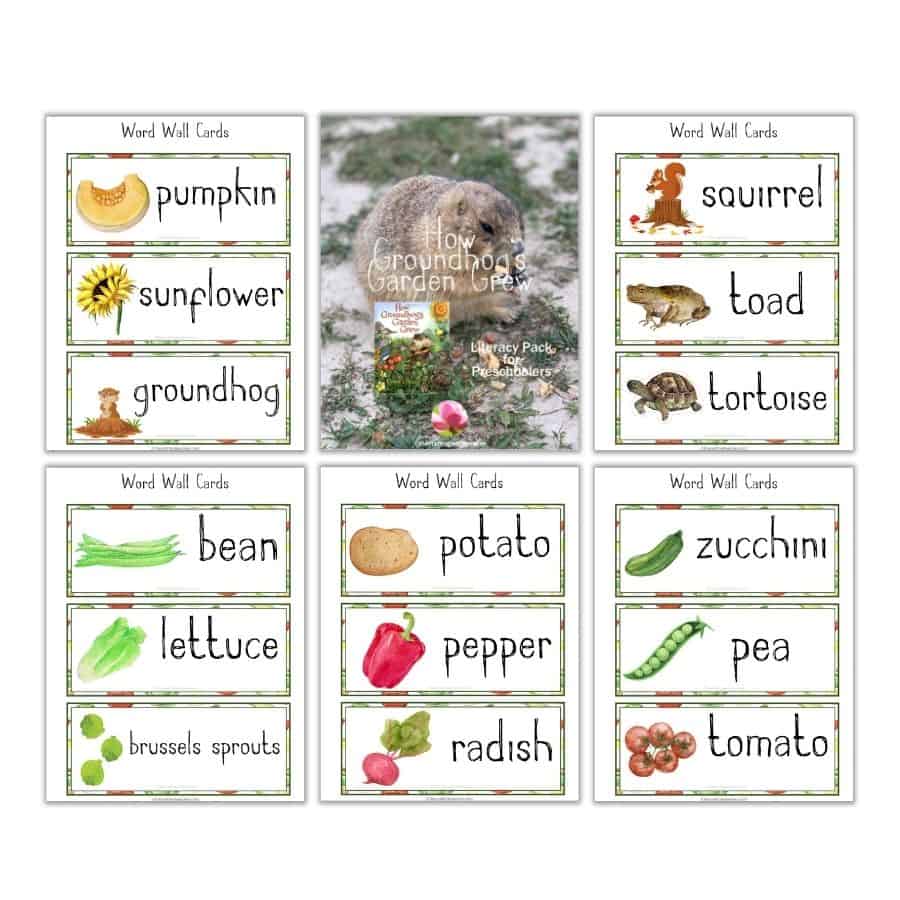
Print them in white cardstock and laminate them for durability. Encourage your children to use each Word Wall word in a short sentence. You can also use them to review the name and/or sound of the beginning letter of each word.
Letter Recognition
To prepare this activity print out the pages in white cardstock, cut out the cards, and laminate them for durability. You can have the children working alone or in pairs to match the groundhog and squirrel uppercase letters, with the vegetables and fruits lowercase letters. Use all or part of the letters, according to the developmental stage of your children.
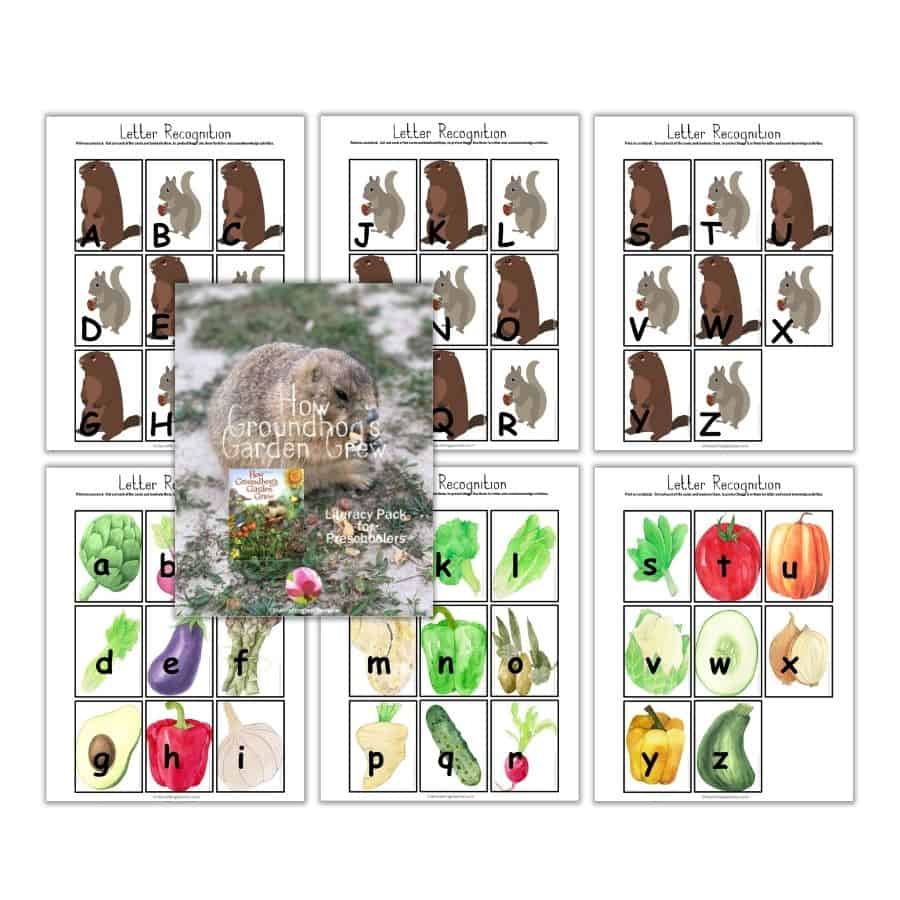
Veggies Letter Match
This activity is part of the How the Groundhog’s Garden Grew Literacy Pack, and includes all the letters of the alphabet. Print the pages in white cardstock, cut out the cards, and laminate them for durability. Present the letter match cards, and have your children match the upper-case and lower-case letters. Invite them to say the name and sound of the letter they are matching.
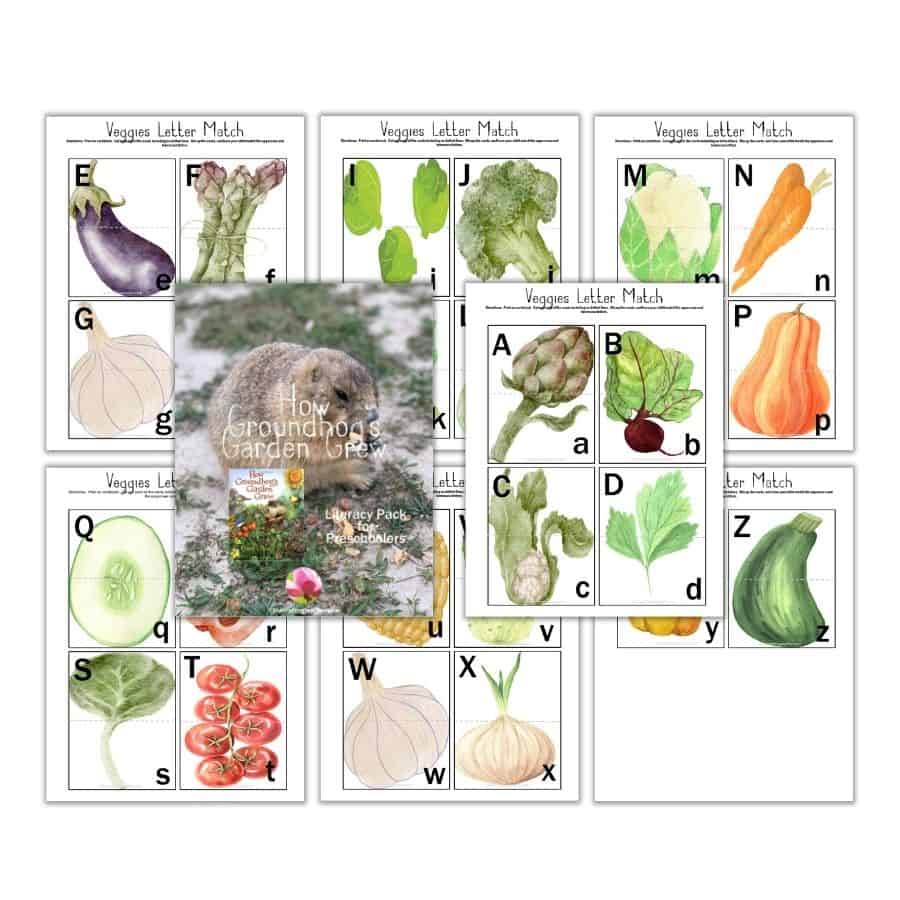
Groundhog and Squirrel ABC Mazes
I’ve included two ABC mazes in the How the Groundhog’s Garden Grew Literacy Pack, one with uppercase letters and another one with lowercase letters. Have the children review the alphabet in order by using a dot-to-dot marker to mark each letter of the alphabet in the correct order. If you want to use the activity multiple times, print the pages in white cardstock and laminate them or place them in a dry-erase pocket, and have your children use small manipulatives such as bingo chips, mini erasers, buttons, pom poms, or mini veggies and animals to mark the alphabet letters. Encourage them to say the names of the letters as they go.
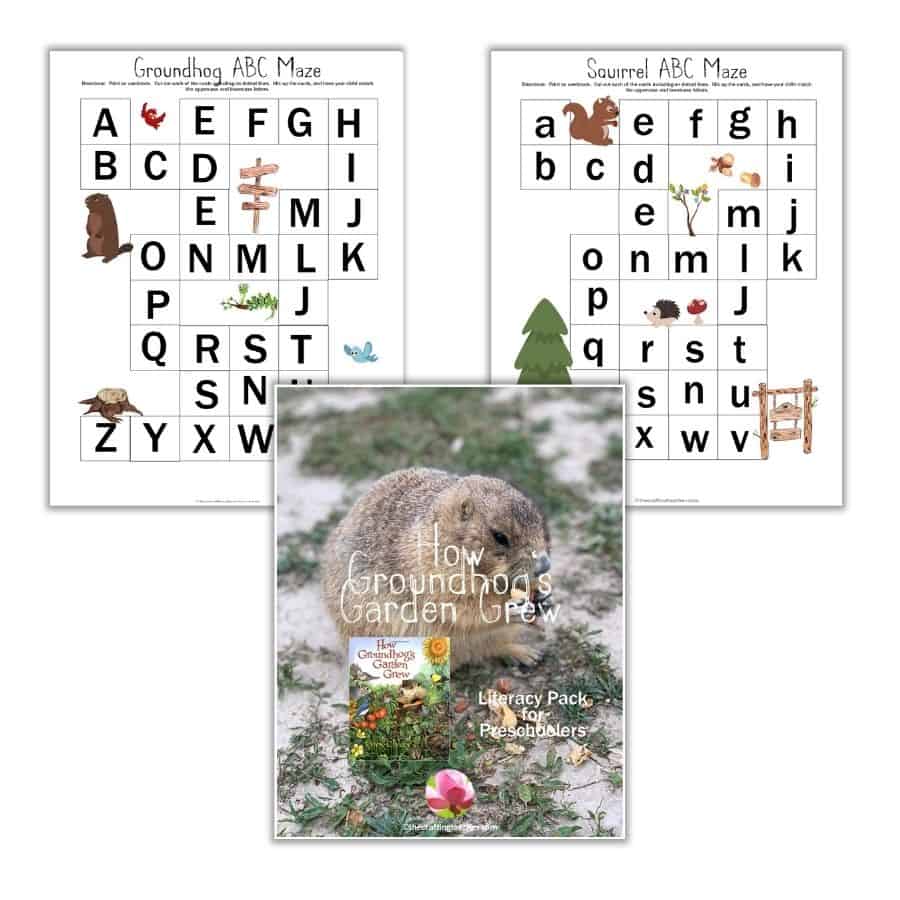
Compound Words
The How the Groundhog’s Garden Grew Literacy Pack includes four different versions of compound word puzzles, using the words sunflower, eggplant, and groundhog. If you have not introduced your children to compound words, they are not going to be able to do this activity, but maybe this allow you to do it or introduce new compound words. You just have to print the pages in white cardstock, cut out the cards, and laminate them for durability.
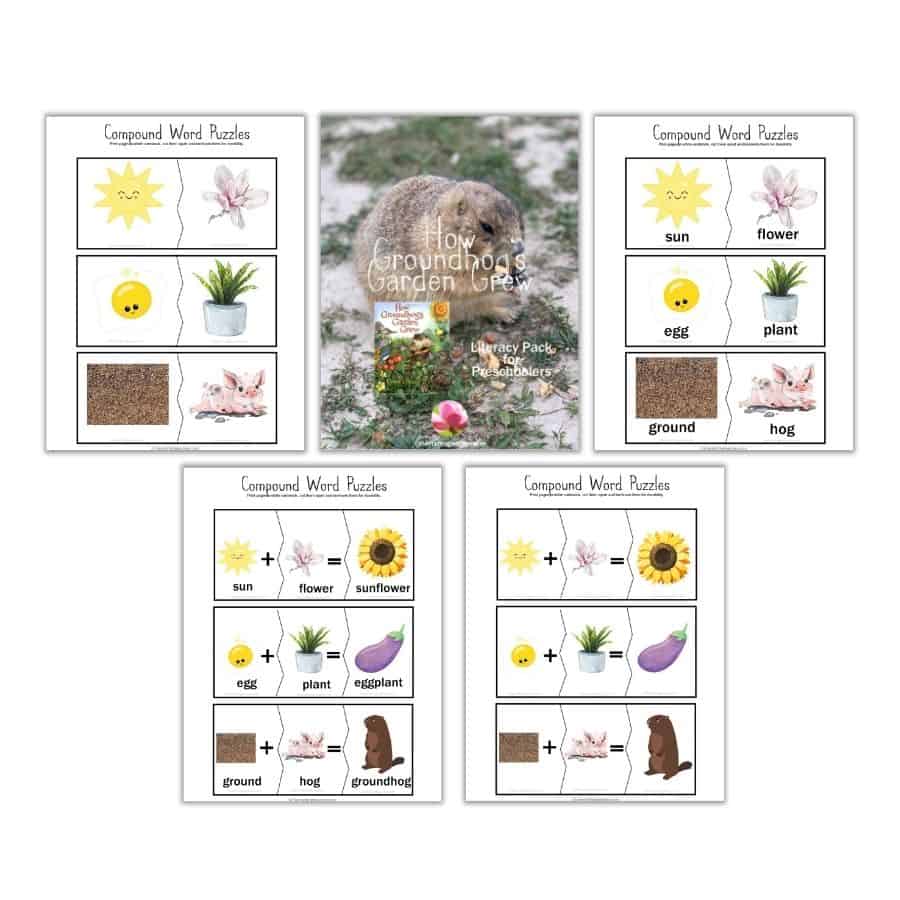
Phonological Awareness and Phonics
Letter Planting
Remind your students that words are made up of individual letters. Say and spell some words from the story using your Word Wall Cards. Ask the children to move their hands in a planting motion, every time you say a letter.
Groundhog’s Blends
Tell your children that the groundhog is very young and imagine that they will help him learn how to read by blending the sounds to make words. Call out the words from the story, one phoneme at a time, and ask the students to practice blending the sounds to form the words.
Rhyming Words
I’ve included four different versions of the activity, in the How the Groundhog’s Garden Grew Literacy Pack. Print the pages in white cardstock, cut out the cards, and laminate them for durability. Gather the preschoolers together and practice “planting”. Call out the word pairs listed below. Ask the students to pretend they are planting like groundhog and squirrel every time they hear a par of rhyming words, or stay put if the words don’t rhyme.
These are the rhyming words included in the pack that you can use: tomato – potato; pepper – leopard; carrot – parrot; eggplant – plant; corn – lawn; bean – green.
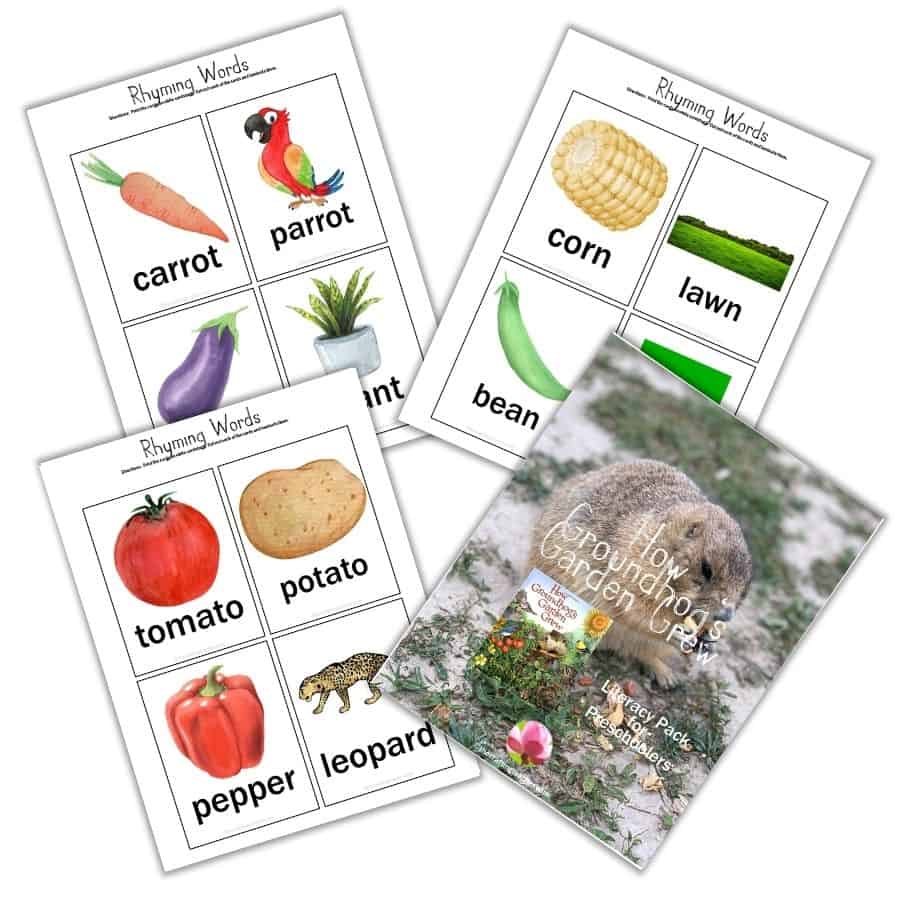
Emergent Writing
Finding the Garden
After reading the story, encourage the children to help the Groundhog find his garden by tracing the path using a crayon, marker, or pencil, and the sheet provided in the How the Groundhog’s Garden Grew Literacy Pack. If you want to use the activity multiple times, print the page in white cardstock, laminate it, and have your children use a dry–erase marker to trace the path.
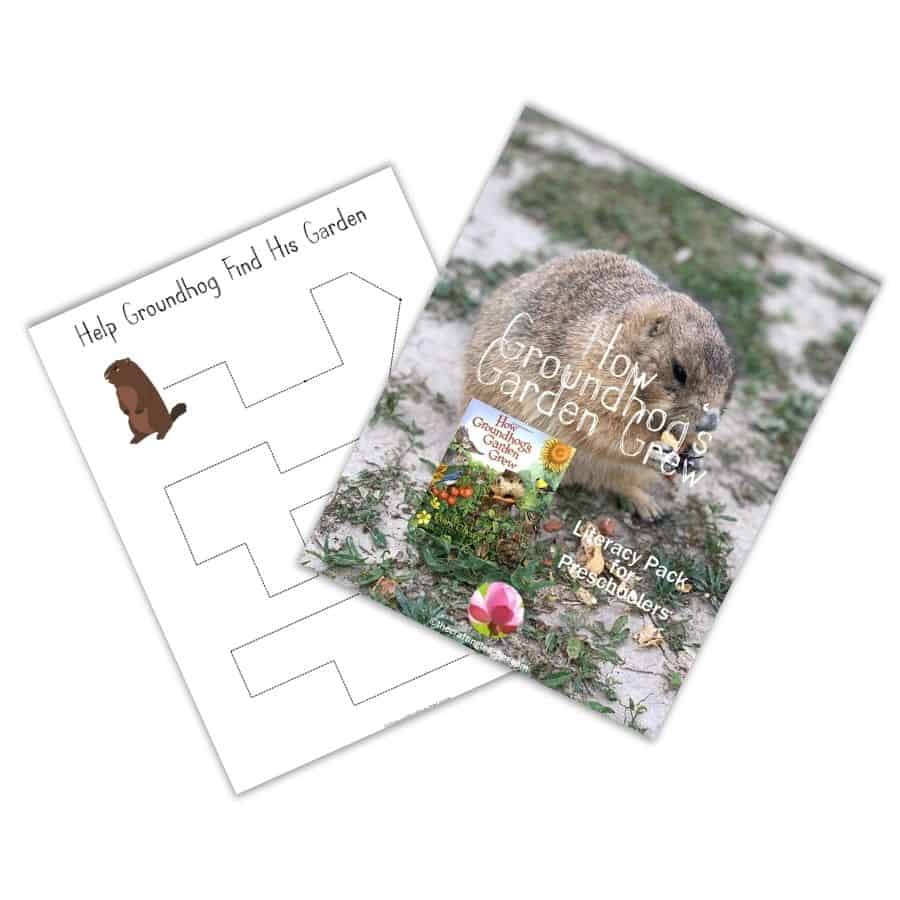
Tracing Letters
This How the Groundhog’s Garden Grew Literacy Pack includes eight-letter sheets: Bb for bean and brussels sprouts; Gg for groundhog; Ll for lettuce; Pp for potato, pumpkin, pepper, and pea; Rr for radish; Ss for sunflower and squirrel; Tt for tomato, toad, and tortoise; and Zz for zucchini.
Print each page using white cardstock and laminate them or place them in a dry–erase pocket to make them last longer, and use them multiple times. Invite the children to use a dry-erase marker to trace the letters.
This activity is great for strengthening the children’s language, letter recognition, pre-writing, and fine motor skills. To extend the activity you can use the to:
- Teach or review letter sounds and names.
- Spell the words.
- Match each letter and word with magnetic, foam, or wooden letters.
- Copy the letters using crayons, markers, or pencils.
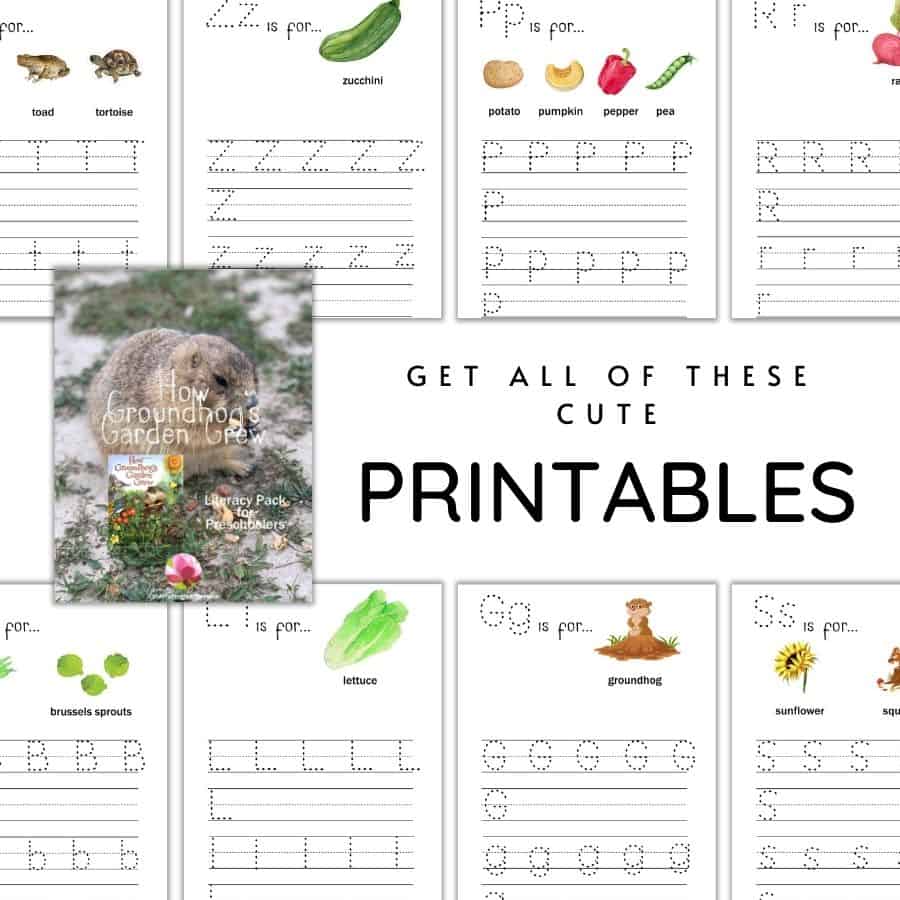
Write a Class Story to Make a Book
During circle time invite your children to create a story, reminding them that the story has to have a beginning, middle, and end. Use chart paper to take dictation.
You can encourage them by starting with something like “If I were a little groundhog….”, or “If I could plant a garden…”. When the story is finished, print it out and have the students illustrate the story. Put it together as a book for the library, and make a copy for each of the authors.
Other Related Books
You can always read and add more related books to your library in other centers, to give children wide learning experiences and variety to choose from. I’m sure the previous activities will spice up their curiosity. Below are some books I like. These books can be found at your local library, used book store, and on Amazon. If you want to add them to your collection, you can use my affiliate link embedded in the titles for immediate access.
- My First Book About Growing Food by Duopress Labs. This book is a beautiful introduction to the benefits of growing food, helping them to develop a connection with the natural world, in a friendly and easy way.
- Gregory’s Shadow by Don Freeman. Gregory is a shy groundhog, and having his friend Shadow close by makes him feel brave. But one day Gregory and Shadow go outside to look for food, and they get separated. Scared and lonely, they search and search for one another.
- How Plants Grow by Dona Herwick Rice. Children will learn about various parts of the plant including seeds, roots, and leaves in this engaging nonfiction title, featuring vivid, clear photos and simple, informational text.
- Groundhog’s Runaway Shadow by David Biedrzycki. Phil and his shadow do everything together. But where Phil is steady, predictable, and a little boring, Shadow is adventurous, freewheeling—even a bit rude. So they don’t get along so well anymore. Fed up, the two have a falling out, and Shadow runs off to see the world.
- Facts About the Groundhog by Lisa Stratton. This educational book presents is packed with facts along with full-color photographs and carefully chosen words to teach children about the Groundhog.
- Up in the Garden and Down in the Earth by Kate Messner. This book talks about leaves and sprouts, growing vegetables, ripening fruit, and the earthworms, snakes, skunks, and other creatures that make a garden their home.
- Seed to Plant by Kristin Baird Rattini. In this lively and educational book, children will learn how plants grow, learning about what plants need to thrive and grow with careful text, and brilliant photographs.
Pin It For Later
If you are in a rush and don’t have time to read the post and download the printable but want to save it for later, pin this to your Literacy board on Pinterest for later. Then, check other story-related activities below.
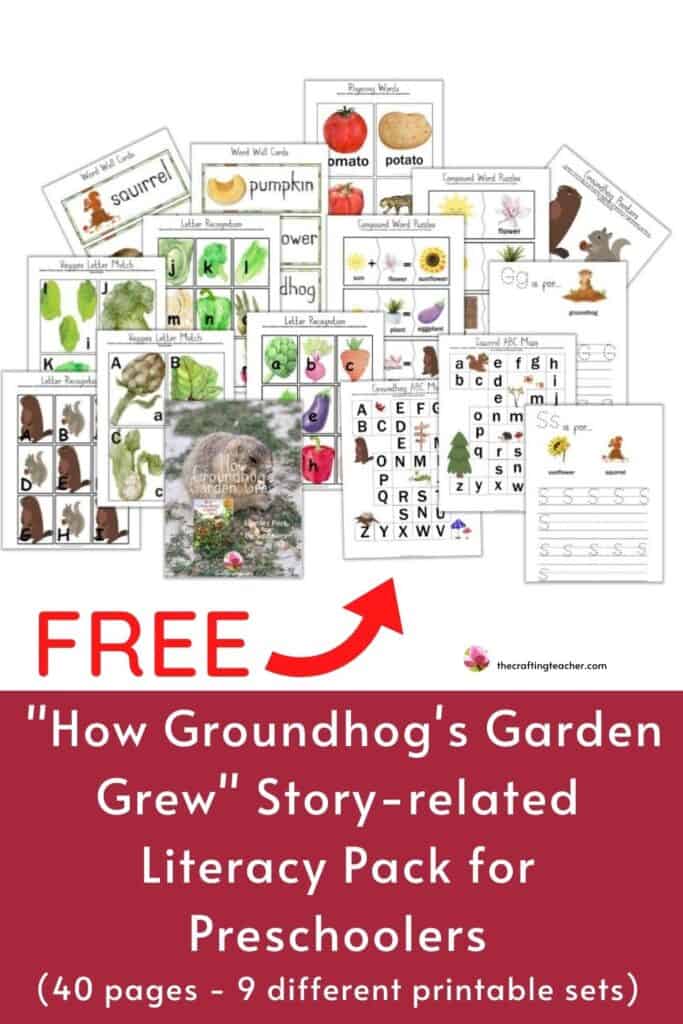
Don’t forget to download your FREE How the Groundhog’s Garden Grew Literacy activities pack. You just have to click on the link below and type your email, for an immediate download.
Be happy, safe, and creative. I wish you well.
Love,

P.S. Please let me know if these activities work for you, and if you would like to see an article or a printable about how to make something specific, please let me know and I will try my best to create it for you. My goal is to help you in any way I can and I don’t like anything better than to post something that you might find useful.

